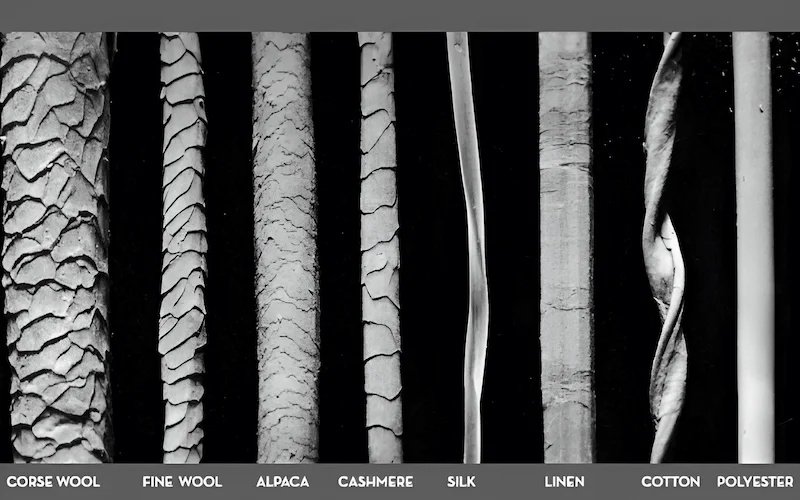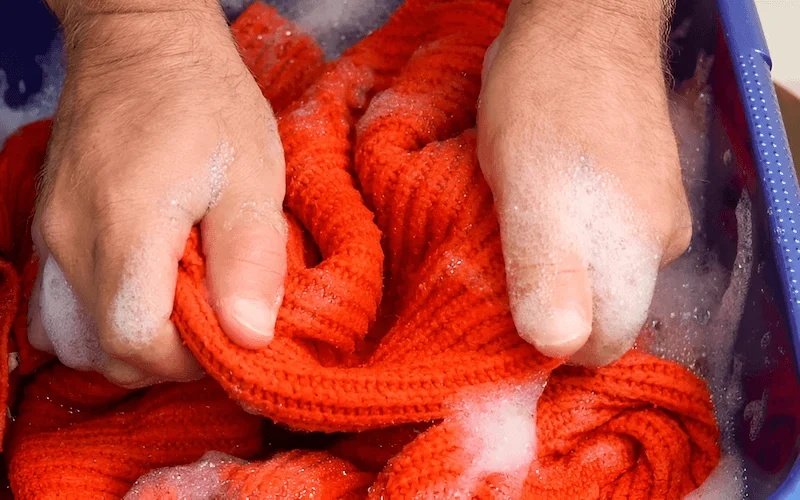How to Wash Wool Sweaters: Preserve Your Sweater
Let’s face it, that sinking feeling when you pull your favorite wool sweater out of the wash, and it’s two sizes too small is the worst. Or maybe you’ve avoided washing your woolens altogether, fearing you’ll damage them. Those anxieties are understandable. Wool sweaters require a level of care because improper washing can lead to shrinking, stretching, or damage.
This guide aims to alleviate those worries by providing clear instructions. This article will walk you through everything you need to know about how to correctly clean wool – preserving its beauty, softness, and shape for many years to come. We’ll cover the science behind wool, the importance of choosing the right methods, and give you step-by-step instructions for both hand washing and machine washing.
1. Understanding wool: why special care is needed
Wool is unlike other fabrics. Proper care ensures items will last a lifetime, while mistreating it can lead to irreversible changes. The natural structure is delicate. This section discusses the fiber of wool and why it cannot be treated like cotton.
1.1 The unique properties of wool fibers
Wool fibers are like tiny, overlapping scales. These scales make wool naturally breathable, odor-resistant, and temperature-regulating. But, these same scales are the reason for shrinkage and felting (when wool fibers mat together and become dense) if they’re exposed to excessive heat, agitation, or harsh detergents.

1.2 Debunking the dry cleaning myth
Dry cleaning is often seen as the go-to for wool, but that’s not always the case. While dry cleaning is an option, especially for structured wool garments like blazers, it’s not always the best choice for sweaters. The chemicals used in dry cleaning can sometimes strip the natural oils from wool fibers, making them brittle over time. Hand washing or machine washing, when done correctly, are often gentler and more effective for sweaters.
2. Preparing to wash your wool sweater
Before even touching water, taking a few preparatory steps will significantly impact the success of washing a wool sweater. This involves checking the care label, choosing the right supplies, and addressing any existing stains.
2.1 Reading the care label: deciphering the symbols
The care label is an instruction manual for garment care. It provides vital information about how to safely clean the item. Key symbols to pay attention to include:
- Hand Wash: A tub with a hand in it indicates that hand washing is required.
- Machine Wash: A tub with a number inside indicates the maximum water temperature (in Celsius). If there’s a line underneath the tub, it means a gentle or delicate cycle is required.
- Do Not Wash: A crossed-out tub means the item should not be washed in water.
- Dry Clean: A circle indicates dry cleaning. A letter inside the circle specifies the type of solvent to use (this is for professional cleaners).
- Drying: The instructions on the tag may include flat dry to avoid stretching the item.
- Ironing: An iron symbol with dots inside indicates the appropriate heat setting. A crossed-out iron means ironing is not recommended.

2.2 Gathering your supplies
Having the right supplies on hand will make the washing process smoother. Here’s a list of what’s needed:
- Detergent: Choose a wool-safe detergent. These are specifically formulated to be gentle on wool fibers. Look for terms like “mild,” “pH-neutral,” or “enzyme-free.” Avoid using regular detergents, as they can be too harsh.
- Basin or Sink: A clean basin or sink is needed for hand washing.
- Washing Machine: If machine washing, ensure the machine has a wool or delicate cycle.
- Towels: Several clean, absorbent towels are needed for drying.
- Drying Rack: A flat drying rack is essential for drying wool sweaters.
- Mesh Laundry Bag: This is highly recommended for machine washing to protect the sweater from snagging.
- Stain Remover: This optional item is for treating stains before washing.

2.3 Pre-treating stains (optional but recommended)
Addressing stains before washing improves the chances of removing them completely. Here’s how to pre-treat stains:
- Apply a small amount of wool-safe stain remover to the stained area.
- Use a damp cloth to gently dab the stain. Never rub vigorously, as this can damage the wool fibers and spread the stain.
- Allow the stain remover to sit for the time recommended on the product label (usually a few minutes).
2.4 Assessing your sweater’s condition
Take some time to check the condition of the garment. Are there any loose threads or areas that are particularly worn? Make a note of those areas.
3. Method 1: Hand washing your wool sweater (the gentle approach)
Hand washing is the preferred method for cleaning wool sweaters. It offers the most control and minimizes the risk of damage.
Follow these steps for a successful hand wash:
- Fill with Cool Water: Fill a clean basin or sink with cool or lukewarm water. Never use hot water, as it can cause shrinkage. The ideal temperature is around 30°C (86°F).
- Add Detergent: Add the recommended amount of wool-safe detergent to the water. Swirl the water gently to distribute the detergent.
- Submerge: Turn the sweater inside out (this helps protect the outer surface) and gently submerge it in the water.
- Soak: Allow the sweater to soak for 10-30 minutes. This allows the detergent to penetrate the fibers and loosen dirt.
- Agitate (Gently): Gently swish the sweater around in the water. Avoid any harsh scrubbing or twisting motions. Focus on gently squeezing the soapy water through the fabric.
- Rinse: Drain the soapy water and refill the basin with clean, cool water. Gently press the sweater to remove the soapy water. Repeat this rinsing process until the water runs clear and no detergent remains.
- Press (Don’t Wring): Never wring out a wool sweater. Wringing can stretch and distort the fibers. Instead, gently press the water out of the sweater against the side of the basin or sink.

4. Method 2: Machine washing your wool sweater (the convenient option)
While hand washing is the gentlest method, machine washing can be a safe alternative for some wool sweaters, provided the correct settings and precautions are used.
- Prepare the Sweater: Turn the sweater inside out. This protects the visible surface of the sweater from abrasion during the wash cycle.
- Mesh Bag: Place the inside-out sweater in a mesh laundry bag. This is crucial for protecting the sweater from snagging on other items or parts of the washing machine.
- Choose the Right Cycle: Select the “Wool” cycle, “Delicate” cycle, or “Hand Wash” cycle on the washing machine. These cycles use gentle agitation and lower spin speeds, which are essential for protecting wool.
- Cold Water: Always use cold water. Hot water will cause shrinkage.
- Detergent: Add the appropriate amount of wool-safe detergent, following the product’s instructions.
- Low Spin: Ensure the machine is set to a low spin cycle. High spin speeds can stretch and distort wool.
- Remove Promptly: Once the cycle is complete, remove the sweater from the washing machine immediately. Leaving it in the machine, even for a short time, can lead to creasing and misshaping.

5. Drying your wool sweater: avoiding shrinkage and stretching
Proper drying is just as important as proper washing. Incorrect drying can easily ruin a wool sweater, causing it to shrink, stretch, or become misshapen.
5.1 The importance of flat drying
Flat drying is the only recommended method for drying wool sweaters. Hanging a wet wool sweater will cause it to stretch and distort due to the weight of the water. The fibers can become permanently elongated, ruining the sweater’s shape.
5.2 Step-by-step drying instructions
- Remove Excess Water: After washing (either by hand or machine), gently press out as much excess water as possible. Do not wring or twist the sweater.
- Towel Roll (Optional): Lay the sweater flat on a clean, absorbent towel. Roll up the towel, starting from one end, gently pressing as you go. This helps to absorb more water and speed up drying.
- Reshape: Lay the sweater flat on a clean, dry towel or a drying rack. Gently reshape the sweater to its original dimensions. Smooth out any wrinkles or creases.
- Air Dry: Allow the sweater to air dry completely. This may take 24-48 hours, or even longer, depending on the thickness of the wool and the humidity in the room.
- Flip: After several hours, flip the sweater over to ensure even drying.
- Avoid Direct Heat and Sunlight: Never place a wool sweater in direct sunlight or near a heat source (like a radiator) to dry. This can cause shrinkage, yellowing, and damage to the fibers.

6. Dealing with pilling: keeping your sweater looking new
Pilling (those tiny balls of fuzz that form on the surface of fabric) is a common occurrence with wool sweaters, but it doesn’t mean the sweater is ruined.
6.1 What causes pilling and how to prevent it
Pilling is caused by friction. Loose wool fibers rub against each other or other surfaces, causing them to tangle and form small balls. Common areas for pilling include underarms, the sides of the body, and anywhere the sweater comes into contact with a bag or other abrasive surface.
While pilling can’t be completely eliminated, it can be minimized:
- Gentle Washing: Following the washing instructions in this guide will help reduce friction.
- Avoid Abrasive Surfaces: Be mindful of what the sweater comes into contact with.
6.2 How to safely remove pills
There are several tools designed to remove pills safely:
- Sweater Comb: A sweater comb has fine teeth that gently lift pills from the surface of the fabric. Use short, gentle strokes in the direction of the knit. This is best for finer-gauge wool sweaters.
- Sweater Stone: A sweater stone is a porous stone (often made of pumice) that gently abrades the surface of the fabric, removing pills. Use light pressure and work in the direction of the knit. This is best for heavier-gauge wool sweaters.
- Fabric Shaver: A fabric shaver is an electric device that uses rotating blades to cut off pills. Use caution with fabric shavers, as they can potentially damage the fabric if used too aggressively. Start with a light touch and test in an inconspicuous area.
7. Storing your wool sweaters: long-term care
Proper storage is essential for preserving wool sweaters and protecting them from damage.
7.1 Cleaning before storage
Before storing wool sweaters, especially for the off-season, it’s crucial to ensure they are clean. Even if a sweater doesn’t appear dirty, it may contain traces of body oils, perspiration, or food particles, which can attract moths and other pests. Washing the sweaters as described earlier before storage will prevent moth infestations.
7.2 Folding vs. hanging
Always fold wool sweaters for storage. Hanging can stretch the shoulders and distort the overall shape of the sweater, especially heavier knits. Folding prevents this stretching and helps maintain the sweater’s original form.
7.3 Choosing the right storage containers
The ideal storage containers for wool sweaters are:
- Breathable: Choose containers made of breathable materials like cotton or linen. These materials allow air circulation, which helps prevent moisture buildup and mildew.
- Avoid Plastic Bins: Plastic bins, while seemingly convenient, trap moisture and can create a breeding ground for mildew and yellowing.
- Acid-Free Tissue Paper (Optional): For extra protection, especially for delicate or light-colored sweaters, wrap them in acid-free tissue paper before placing them in the storage container.
7.4 Moth prevention
Moths are a significant threat to wool sweaters. Here are several ways to prevent moth infestations:
- Lavender Sachets: Lavender has natural moth-repelling properties. Place lavender sachets in the storage containers with the sweaters.
- Cedar Blocks or Chips: Cedarwood also acts as a natural moth repellent. Place cedar blocks or chips in the storage containers. Note: Cedar’s effectiveness diminishes over time, so it needs to be refreshed periodically (sanding the surface lightly can help).
- Airtight Containers: If using airtight containers, ensure the sweaters are completely clean and dry before sealing them. This is a good option for short-term storage, but for longer-term storage, breathable containers are preferred.
- Regular Airing: Even in storage, it’s beneficial to air out wool sweaters periodically. Take them out of their containers, shake them gently, and allow them to air out for a few hours before refolding and returning them to storage. This helps prevent musty odors and discourages pests.
8. Related questions
This section addresses some common questions and concerns about caring for wool sweaters.
8.1 Can I use fabric softener on wool sweaters?
No, fabric softener is not recommended for wool. Fabric softeners coat the fibers, which can reduce wool’s natural breathability and moisture-wicking properties. It can also leave a residue that can make the wool feel less soft over time.
8.2 What should I do if my wool sweater accidentally shrinks?
Unfortunately, once a wool sweater has significantly shrunk, it’s often irreversible. However, if the shrinkage is minor, there’s a slight chance of some improvement. You can try re-wetting the sweater in cool water with a bit of wool wash or hair conditioner (which can help relax the fibers).
Then, very gently try to stretch the sweater back to its original shape while it’s damp. Lay it flat to dry, and continue to gently reshape it as it dries. However, there’s no guarantee this will work, and over-stretching can damage the fibers. Prevention is always the best approach.
8.3 How often should I wash my wool sweaters?
Wool’s natural odor-resistant properties mean it doesn’t need to be washed as frequently as other fabrics. Wash wool sweaters only when necessary – when there are visible stains or a noticeable odor. Often, airing out a sweater between wears is sufficient to refresh it. Over-washing can lead to wear and tear on the fibers.
8.4 Can I iron my wool sweater?
Ironing is generally not recommended for wool sweaters. The direct heat and pressure from an iron can crush the wool fibers, making them appear flat and shiny. Instead, use a steamer to remove wrinkles. Steaming is much gentler and helps to restore the natural loft of the wool. If you must iron, use the lowest heat setting, place a pressing cloth between the iron and the sweater, and use a very light touch.
8.5 Is it safe to dry clean my wool sweater if the tag allows?
If the care label on the sweater specifically states that dry cleaning is acceptable, then it is generally safe to take it to a professional dry cleaner. However, keep in mind the points made earlier about the potential for harsh chemicals to affect the wool fibers over time. Hand washing or machine washing (when appropriate) are often gentler options for regular cleaning.
Read more:
Caring for wool sweaters might seem daunting at first, but by following these steps, they can be cherished for years to come. Understanding the unique properties of wool, choosing the right washing and drying methods, and storing them properly will preserve their softness, shape, and longevity. With a little care, these garments will become long-lasting favorites.






















